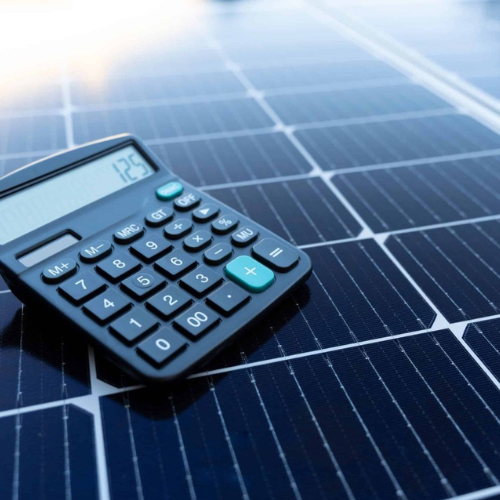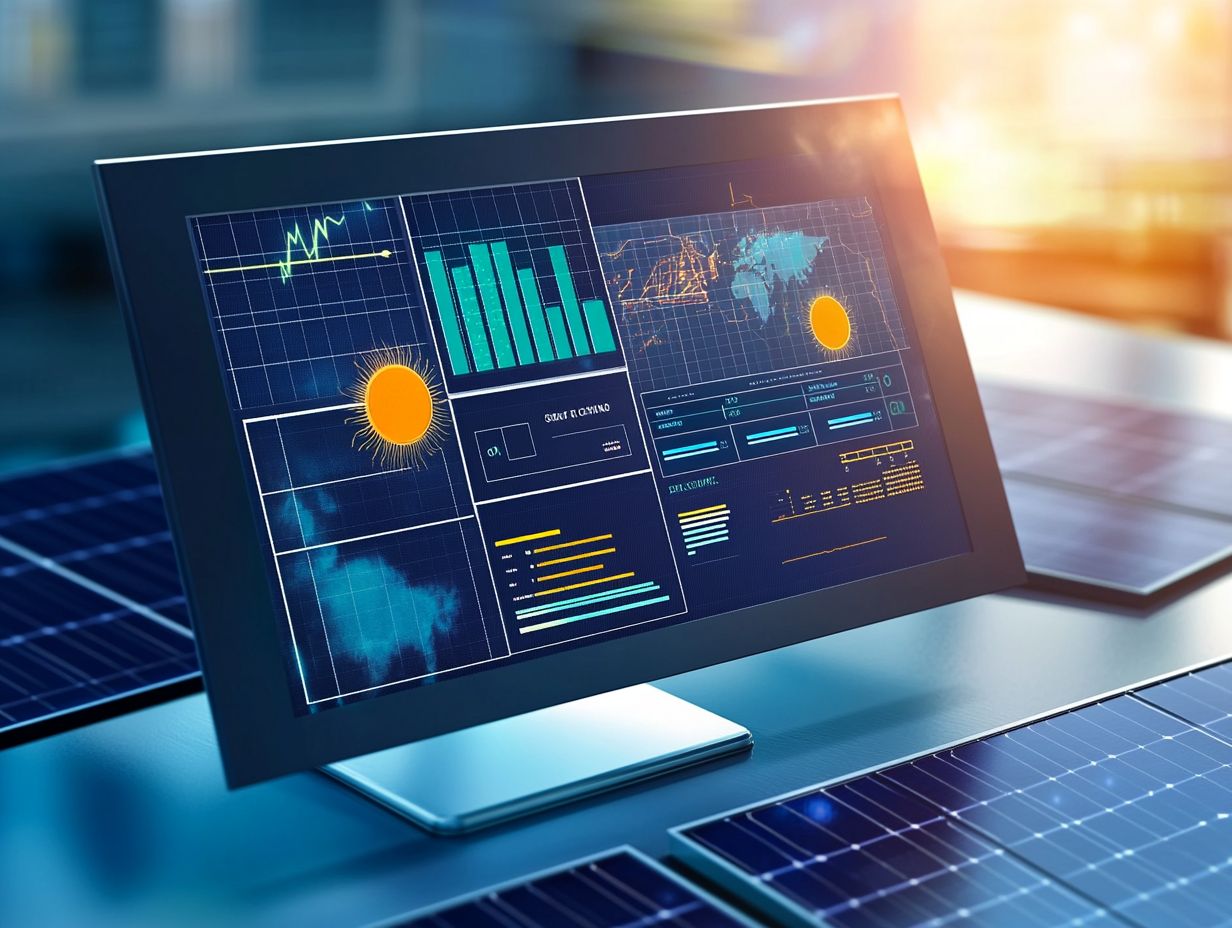Contents
- 1 Efficiency and Performance Comparison
- 2 Cost Analysis and Return on Investment
- 3 Durability and Longevity
- 4 Installation and Maintenance Considerations
- 5 Environmental Impact and Sustainability
- 6 Market Trends and Adoption Rates
- 7 Future Developments and Innovations
- 8 FAQs
- 8.1 What are bifacial solar panels?
- 8.2 What are monocrystalline solar panels?
- 8.3 What are the differences between bifacial and monocrystalline solar panels?
- 8.4 Which type of solar panel is more efficient?
- 8.5 Which type of solar panel is more cost-effective?
- 8.6 Which type of solar panel is more commonly used?
When you delve into the world of solar energy, you will encounter two prominent types of solar panels: bifacial and monocrystalline. Bifacial solar panels are designed to capture sunlight from both sides, allowing them to harness reflected light from the ground or surrounding surfaces. This dual-sided functionality can significantly enhance their energy production, especially in environments with high albedo, such as snowy or sandy areas.
On the other hand, monocrystalline solar panels are made from a single crystal structure, typically silicon, which gives them a uniform appearance and high efficiency. They are known for their sleek design and are often favored for residential installations due to their aesthetic appeal. As you explore these technologies further, you will find that each type has its unique advantages and applications.
Bifacial panels can be particularly beneficial in large-scale solar farms where maximizing energy output is crucial. Their ability to absorb light from both sides means they can generate more electricity than their monocrystalline counterparts under the right conditions. Conversely, monocrystalline panels are often more efficient in terms of space utilization, making them ideal for rooftops where space is limited.
Understanding these fundamental differences will help you make informed decisions about which type of solar panel best suits your energy needs. Get your free solar assessment at https://www.solarenergy4u.org/free-pro-advice/.
Key Takeaways
- Bifacial solar panels generate electricity from both sides, while monocrystalline panels only generate from one side
- Bifacial panels have higher efficiency and performance compared to monocrystalline panels
- Bifacial panels have a higher upfront cost but offer a better return on investment due to their higher efficiency
- Both bifacial and monocrystalline panels are durable and have a long lifespan
- Installation and maintenance considerations for bifacial panels are similar to monocrystalline panels, with some additional considerations for optimizing rear-side generation
Efficiency and Performance Comparison
When comparing the efficiency of bifacial and monocrystalline solar panels, it’s essential to consider several factors that influence their performance. Monocrystalline panels typically boast higher efficiency ratings, often exceeding 20%. This means they can convert a greater percentage of sunlight into usable electricity compared to other types of panels.
Their efficiency is largely attributed to the purity of the silicon used in their production, which allows for better electron movement and energy conversion. If you are looking for a reliable option that maximizes energy output in limited space, monocrystalline panels may be your best bet. However, bifacial panels present a compelling case when it comes to overall energy production.
While their efficiency ratings may be slightly lower than monocrystalline panels, their ability to capture sunlight from both sides can lead to increased total energy generation. In optimal conditions, bifacial panels can produce 10-20% more energy than traditional monofacial panels. This added performance can be particularly advantageous in installations where reflective surfaces are present, such as white rooftops or light-colored ground materials.
As you weigh your options, consider not only the efficiency ratings but also the potential for increased energy yield based on your specific installation environment.
Cost Analysis and Return on Investment

Cost is a significant factor when deciding between bifacial and monocrystalline solar panels. Generally speaking, bifacial panels tend to have a higher upfront cost due to their advanced technology and dual-sided design. However, this initial investment can be offset by their potential for greater energy production over time.
When evaluating the return on investment (ROI), it’s crucial to consider not just the purchase price but also the long-term savings on your energy bills. If you live in an area with ample sunlight and reflective surfaces, bifacial panels may provide a quicker payback period despite their higher initial cost. On the other hand, monocrystalline panels often come with a lower price point and a well-established market presence.
Their widespread use means that installation costs can be more competitive, and many homeowners find them to be a cost-effective solution for residential solar energy needs. While the ROI may be slower compared to bifacial panels in certain scenarios, the reliability and efficiency of monocrystalline technology make it a popular choice among consumers. Ultimately, your decision should factor in not only the initial costs but also your long-term energy goals and financial situation.
Durability and Longevity
| Product | Durability | Longevity |
|---|---|---|
| Car Tires | 50,000 miles | 5 years |
| Rechargeable Batteries | 500 charge cycles | 10 years |
| LED Light Bulbs | 25,000 hours | 15 years |
Durability is another critical aspect to consider when choosing between bifacial and monocrystalline solar panels. Both types are designed to withstand harsh weather conditions, including heavy rain, hail, and extreme temperatures. However, bifacial panels often come with enhanced durability features due to their construction methods.
Many manufacturers use robust materials that can resist corrosion and physical damage, making them suitable for various environmental conditions. If you live in an area prone to severe weather events, investing in bifacial technology could provide peace of mind regarding longevity. Monocrystalline panels also boast impressive durability and typically come with warranties ranging from 25 years or more.
Their solid construction ensures they can endure years of exposure to the elements without significant degradation in performance. However, it’s essential to note that while both types of panels are built to last, the specific warranty terms and conditions can vary by manufacturer. As you evaluate your options, consider not only the expected lifespan of each panel type but also the warranty coverage that comes with them, as this can provide insight into their long-term reliability.
Installation and Maintenance Considerations
When it comes to installation, both bifacial and monocrystalline solar panels have unique requirements that you should be aware of. Bifacial panels often require specific mounting systems that allow for optimal light capture from both sides. This may involve elevated installations or specialized racking systems that ensure adequate spacing from the ground or other surfaces.
If you’re considering bifacial technology for your solar project, it’s essential to work with experienced installers who understand the nuances of these systems. Monocrystalline panels are generally easier to install due to their more straightforward design and mounting options. They can be installed on various surfaces, including rooftops and ground mounts, without requiring specialized equipment.
Maintenance for both types of panels is relatively low; however, regular cleaning is essential to ensure optimal performance. Dust, debris, and snow accumulation can hinder energy production for both bifacial and monocrystalline systems. As you plan your installation, consider how accessible your panels will be for cleaning and maintenance tasks.
Environmental Impact and Sustainability

The environmental impact of solar technology is a crucial consideration for many consumers today. Both bifacial and monocrystalline solar panels contribute positively to reducing carbon emissions by harnessing renewable energy from the sun. However, the manufacturing processes for these panels can vary significantly in terms of sustainability practices.
Bifacial panels often utilize advanced materials that may have a lower environmental footprint compared to traditional monocrystalline options. Moreover, the dual-sided nature of bifacial panels allows for greater energy generation without requiring additional land use compared to traditional solar installations. This characteristic makes them an attractive option for environmentally conscious consumers looking to maximize their energy output while minimizing land impact.
Monocrystalline panels also have a strong sustainability profile; however, their production process can involve more resource-intensive methods that may not align with every consumer’s environmental values. As you evaluate your options, consider how each panel type aligns with your sustainability goals.
Market Trends and Adoption Rates
As you explore the solar market landscape, you will notice distinct trends regarding the adoption rates of bifacial versus monocrystalline solar panels. In recent years, bifacial technology has gained traction among large-scale solar developers due to its potential for increased energy output and efficiency in specific environments. This growing interest has led to advancements in manufacturing techniques and a decrease in costs over time, making bifacial panels more accessible to a broader audience.
Conversely, monocrystalline panels continue to dominate the residential market due to their established reputation for reliability and efficiency. Many homeowners still prefer this technology because of its proven track record and ease of installation. However, as awareness of bifacial technology increases and more consumers seek innovative solutions for their energy needs, it’s likely that adoption rates will continue to rise across various sectors.
Keeping an eye on these market trends will help you stay informed about which technologies are gaining popularity and how they may impact your future solar investments.
Future Developments and Innovations
Looking ahead, the future of solar technology appears promising as innovations continue to emerge in both bifacial and monocrystalline panel designs. Researchers are actively exploring ways to enhance the efficiency of bifacial panels further by improving materials used in their construction or developing new methods for capturing reflected light more effectively. These advancements could lead to even greater energy yields and make bifacial technology an increasingly attractive option for consumers.
In parallel, monocrystalline technology is also evolving with advancements in manufacturing processes aimed at reducing costs while maintaining high efficiency levels. Innovations such as half-cut cell designs or PERC (Passivated Emitter Rear Cell) technology are enhancing performance metrics while keeping pace with consumer demands for sustainable solutions. As you consider your options in solar technology, staying informed about these developments will empower you to make choices that align with both your energy needs and environmental values.
In conclusion, understanding the differences between bifacial and monocrystalline solar panels is essential as you navigate your options in renewable energy solutions. Each type offers unique advantages regarding efficiency, cost, durability, installation considerations, environmental impact, market trends, and future innovations. By carefully evaluating these factors based on your specific needs and circumstances, you can make an informed decision that aligns with your goals for sustainable energy use.
When comparing bifacial solar panels to monocrystalline panels, it is important to consider the impact on climate change. According to a recent article on solarenergy4u.org, the use of solar energy can significantly reduce greenhouse gas emissions and combat global warming. By choosing the most efficient and environmentally friendly option, such as bifacial solar panels, we can make a positive impact on the planet’s health and sustainability.
FAQs
What are bifacial solar panels?
Bifacial solar panels are a type of solar panel that can generate electricity from both the front and back sides of the panel. This allows them to capture sunlight that is reflected off the ground or other surfaces, increasing their overall energy production.
What are monocrystalline solar panels?
Monocrystalline solar panels are made from a single crystal structure, typically silicon. They are known for their high efficiency and sleek black appearance, making them a popular choice for residential and commercial solar installations.
What are the differences between bifacial and monocrystalline solar panels?
The main difference between bifacial and monocrystalline solar panels is their ability to capture sunlight. Bifacial panels can generate electricity from both the front and back sides, while monocrystalline panels only capture sunlight from the front side. Bifacial panels also have the potential to produce more energy, especially in certain environments with reflective surfaces.
Which type of solar panel is more efficient?
Bifacial solar panels have the potential to be more efficient than monocrystalline panels, especially in environments with high albedo (reflectivity). However, the actual efficiency of a solar panel depends on various factors such as installation location, tilt angle, and shading.
Which type of solar panel is more cost-effective?
The cost-effectiveness of bifacial vs monocrystalline solar panels depends on various factors such as installation location, available space, and the specific requirements of the solar project. In some cases, bifacial panels may offer a better return on investment due to their potential for higher energy production, while in other cases monocrystalline panels may be more cost-effective.
Which type of solar panel is more commonly used?
Monocrystalline solar panels are currently more commonly used than bifacial panels, especially in residential and commercial solar installations. However, the use of bifacial panels is growing as their technology continues to improve and their benefits become more widely recognized.








